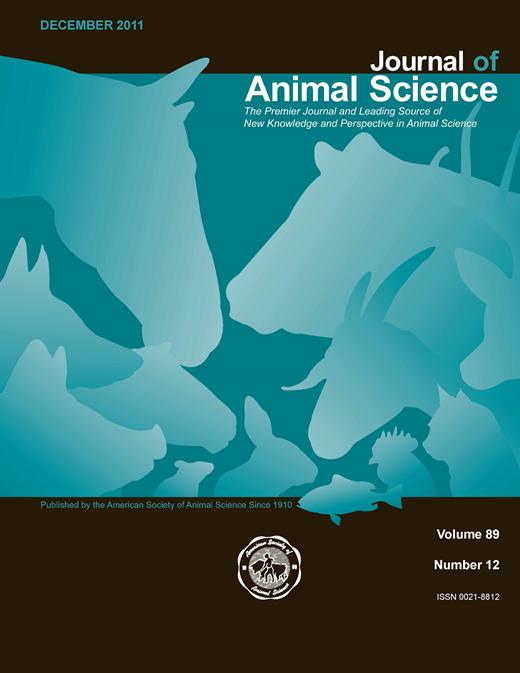-
Views
-
Cite
Cite
R. Real, L. González-Lobato, M. F. Baro, S. Valbuena, A. de la Fuente, J. G. Prieto, A. I. Álvarez, M. M. Marques, G. Merino, Analysis of the effect of the bovine adenosine triphosphate-binding cassette transporter G2 single nucleotide polymorphism Y581S on transcellular transport of veterinary drugs using new cell culture models, Journal of Animal Science, Volume 89, Issue 12, December 2011, Pages 4325–4338, https://doi.org/10.2527/jas.2011-3841
Close - Share Icon Share
ABSTRACT
In commercial dairy production, the risk of drug residues and environmental pollutants in milk from ruminants has become an outstanding problem. One of the main determinants of active drug secretion into milk is the ATP-binding cassette transporter G2/breast cancer resistance protein (ABCG2/BCRP). It is located in several organs associated with drug absorption, metabolism, and excretion, and its expression is highly induced during lactation in the mammary gland of ruminants, mice, and humans. As a consequence, potential contamination of milk could expose suckling infants to xenotoxins. In cows, a SNP for this protein affecting quality and quantity of milk production has been described previously (Y581S). In this study, our main purpose was to determine whether this polymorphism has an effect on transcellular transport of veterinary drugs because this could alter substrate pharmacokinetics and milk residues. We stably expressed the wild-type bovine ABCG2 and the Y581S variant in Madin-Darby canine kidney epithelial cells (MDCKII) and MEF3.8 cell lines generating cell models in which the functionality of the bovine transporter could be addressed. Functional studies confirmed the greater functional activity in mitoxantrone accumulation assays for the Y581S variant with a greater relative VMAX value (P = 0.040) and showed for the first time that the Y581S variant presents greater transcellular transport of the model ABCG2 substrate nitrofurantoin (P = 0.024) and of 3 veterinary antibiotics, the fluoroquinolone agents enrofloxacin (P = 0.035), danofloxacin (P = 0.001), and difloxacin (P = 0.008), identified as new substrates of the bovine ABCG2. In addition, the inhibitory effect of the macrocyclic lactone ivermectin on the activity of wild-type bovine ABCG2 and the Y581S variant was also confirmed, showing a greater inhibitory potency on the wild-type protein at all the concentrations tested (5 μM, P = 0.017; 10 μM, P = 0.001; 25 μM, P = 0.008; and 50 μM, P = 0.003). Differential transport activity depending on the genotype together with the differential inhibition pattern might have clinical consequences, including changes in substrate pharmacokinetics (and subsequently pharmacodynamics) and more specifically, changes in secretion of ABCG2 substrates into milk, potentially implying important consequences to veterinary therapeutics.





